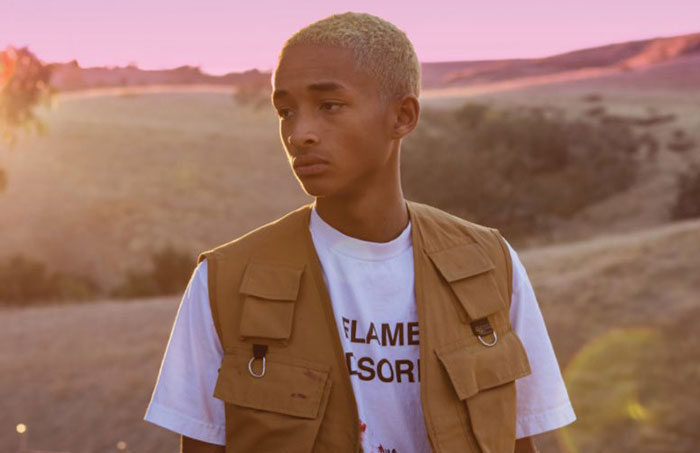
Following a child celebrity through the years can often feel like watching them grow up, especially when you can follow the work they produce or appear in. When it comes to Jaden Smith, son of Will Smith and Jada Pinkett Smith, his album “SYRE,” released by Roc Nation Records on Nov. 17, sees him reaching artistic maturity — and arguably even adulthood itself.
Smith has been performing and recording in the music industry, particularly hip-hop, for years already; some might remember his feature on 2010’s “Never Say Never” by Justin Bieber, which elevated him to popularity. Since then, Smith has appeared on more recent albums and collaborations with artists, including Tyler, The Creator’s track “Pothole” from this year’s album “Flower Boy.” Smith’s new album takes inspiration from a style Tyler, The Creator frequently uses, as Smith speaks through the eponymous character Syre throughout the album. It hasn’t been until now, with the release of “SYRE,” that Smith has been able to establish his own musical style, but it seems like he’s still trying to find it.
The album does not have a set mood or style to it, with the instrumentals and type of rapping changing throughout. This variety reflects Smith’s own interests and his search for a place within the subgenres of hip-hop. The tracks “B,” “L,” “U” and “E” flow into each other cohesively and form somewhat of a formal introduction to the album. They are grandiose and electronic neo-soul tracks with what sounds like influences from Childish Gambino and Frank Ocean. But as soon as “E” ends, Jaden breaks into the song “Breakfast,” featuring A$AP Rocky, a track influenced by the New York rap scene that samples Mobb Deep, a New York rap duo. Later on in the album, Smith’s non-hip-hop influences shine on the tracks “Ninety” and “Lost Boy.” The instrumentals on these tracks sound like dreamy indie music, reminiscent of Tame Impala in some parts. As soon as that interlude is over, Smith breaks into trap-style songs “Batman” and “Icon.”
The themes and messages of the songs — like the genres — vary. The slower, more rhythm-and-blues-influenced tracks are personal and honest, covering more sensitive topics. The four opening tracks discuss heartbreak, the perils of materialism and race. In the track, “Hope,” Smith gets into the politically minded realm of hip-hop, rapping, “Lobbyists are in the Senate, lobbying to make it obvious, innocent people are prosecuted for a living.” The trap-influenced songs, in contrast, mainly cover typical materialistic trap themes like cars and fashion. He does, however, communicate his own unique fashion sense through these songs, saying things like, “I’m ‘bout to put Hello Kitty on my neck, just to show whack rappers how to get it.” Smith is known for his unique and diverse fashion sense, which he reflects through both his lyrics and his style outside of the recording booth.
Due to this switching of styles, Smith is not able to create a signature flow or specific niche for himself on “SYRE,” but he does show his versatility as a hip-hop artist. This ability reflects the larger trend among the new era of millennial hip-hop artists, a hip-hop world where so many subgenres exist that there is no longer just a singular definition of hip-hop. Smith is intertwined with all of these scenes and subgenres, and he jumps between them on “SYRE.” What the album lacks in cohesiveness, however, it makes up for it with Smith’s creativity and his conceptual vision for a new, diverse, multifaceted school of hip-hop.


